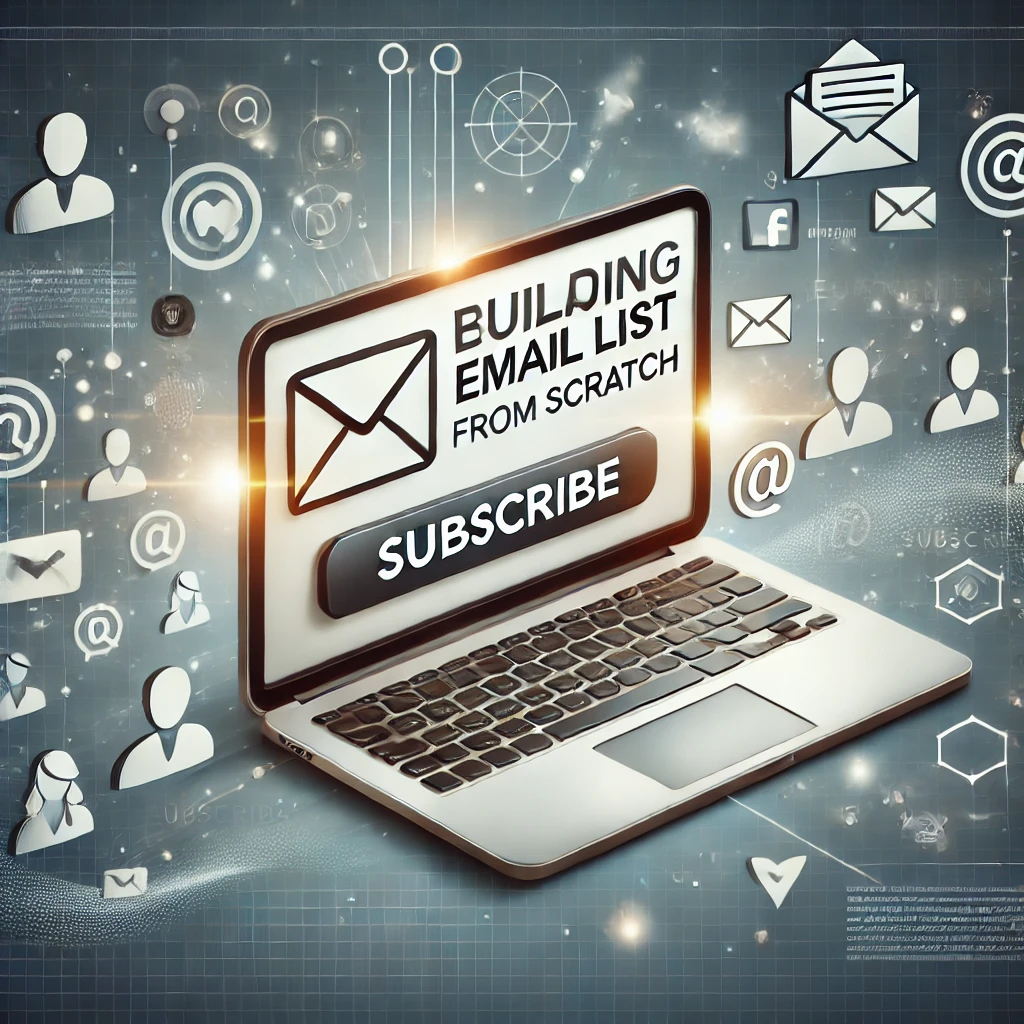
How to Build an Engaged Email List from Scratch
Email marketing is one of the most powerful tools for small businesses. But how do you build a high-quality, engaged email list from scratch? If you’ve been struggling with this, don’t worry—you’re in the right place!
Why Email Marketing is a Game-Changer
Think social media is the best way to reach your audience? Think again! Unlike social platforms, where algorithms decide your fate, email marketing lets you communicate directly with your audience—no middleman, no distractions.
Understanding the Power of an Engaged Email List
Not all email lists are created equal. A big list of unengaged subscribers is useless. You want a list filled with people who are excited to hear from you and actually open your emails.
Step 1: Define Your Target Audience
You can’t send emails to everyone and expect results. Narrow your focus. Who do you want on your list? Entrepreneurs? Local businesses? E-commerce store owners?
Step 2: Offer a Valuable Lead Magnet
People won’t hand over their email for free—they need an incentive. Offer something valuable like:
- A free eBook on time management for entrepreneurs
- A checklist for financial planning for small businesses
- A webinar on social media strategies for startups
Step 3: Optimize Your Sign-Up Forms
Your sign-up forms should be simple and irresistible. Place them on your website, blog posts, and landing pages. Pro tip: A well-designed pop-up form converts better than a static sign-up box.
Step 4: Leverage Social Media for Growth
Turn your followers into email subscribers by promoting your lead magnet on social media. Share valuable snippets of your content and include a call-to-action directing people to sign up.
Step 5: Use Content Marketing to Attract Subscribers
Write blog posts and create videos around topics like:
- How to start a successful small business with limited budget
- Best tools for managing your business operations
- Top marketing strategies to grow your business online
Include email opt-ins within the content to capture leads naturally.
Step 6: Run Giveaways and Contests
Giveaways attract attention! Offer something valuable, such as a free consultation or an exclusive discount, in exchange for email sign-ups.
Step 7: Network and Collaborate
Partner with other businesses in your niche. Guest post on their blogs, feature each other in emails, and co-host webinars. This cross-promotion helps both parties grow.
Step 8: Implement Exit-Intent Popups
Ever noticed those popups that appear when you're about to leave a website? Those are exit-intent popups, and they work wonders for capturing last-minute subscribers.
Step 9: Nurture Your List for Engagement
Once people sign up, don’t ghost them! Send a welcome email, deliver value consistently, and mix in personal branding for entrepreneurs to make connections more authentic.
Step 10: Monitor and Optimize Your Email Campaigns
Track open rates, click-through rates, and unsubscribes. Use A/B testing to see what works best. Continuous improvement is key to email marketing for small businesses.
Conclusion
Building an engaged email list from scratch isn’t just about collecting emails—it’s about creating genuine relationships. Follow these steps, stay consistent, and watch your business grow.
Frequently Asked Questions
1. How long does it take to build an engaged email list?
It depends on your strategy, consistency, and audience size. Some businesses see results in weeks, while others take months.
2. Can I buy an email list to speed up the process?
No! Purchased lists often contain unengaged or fake emails. It’s always better to build a list organically.
3. What is the best email marketing tool for small businesses?
Some great options include Mailchimp, ConvertKit, and ActiveCampaign. Choose one based on your needs and budget.
4. How often should I email my list?
Consistency matters. Start with once a week and adjust based on engagement levels.
5. What’s the biggest mistake to avoid in email marketing?
Sending too many sales emails! Focus on providing value, not just selling.